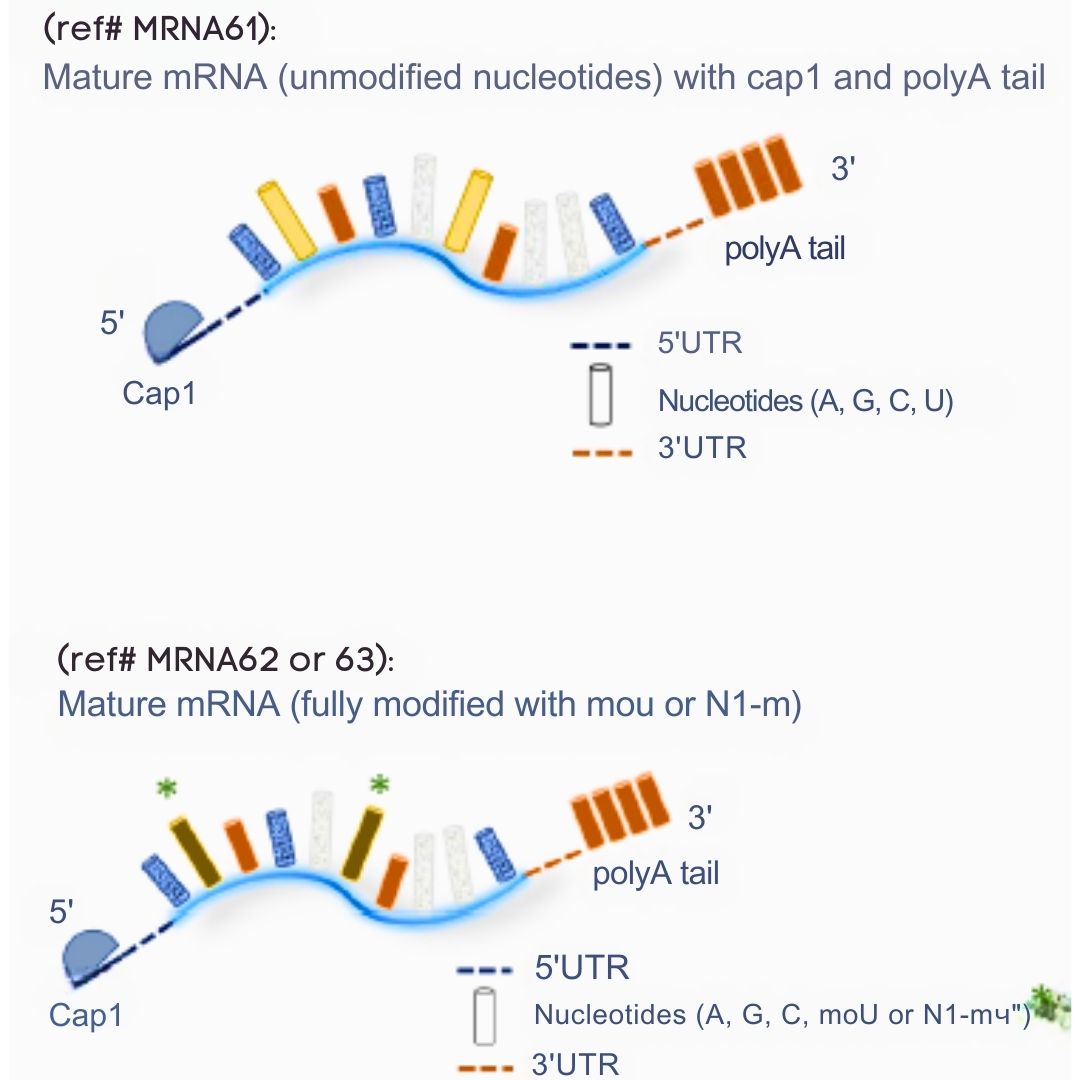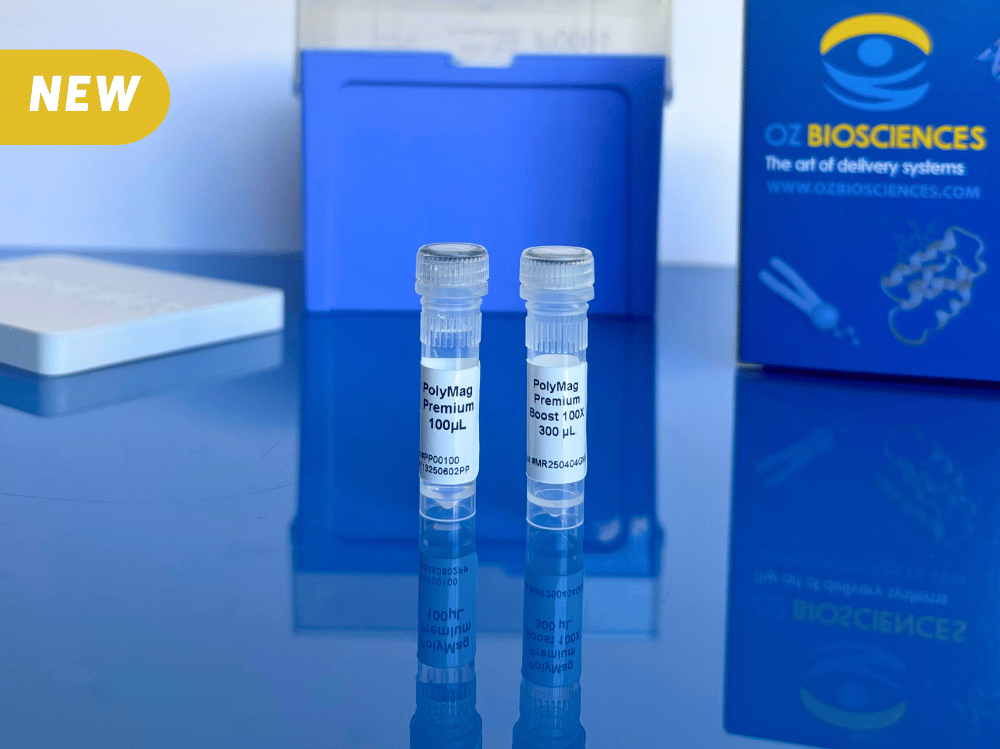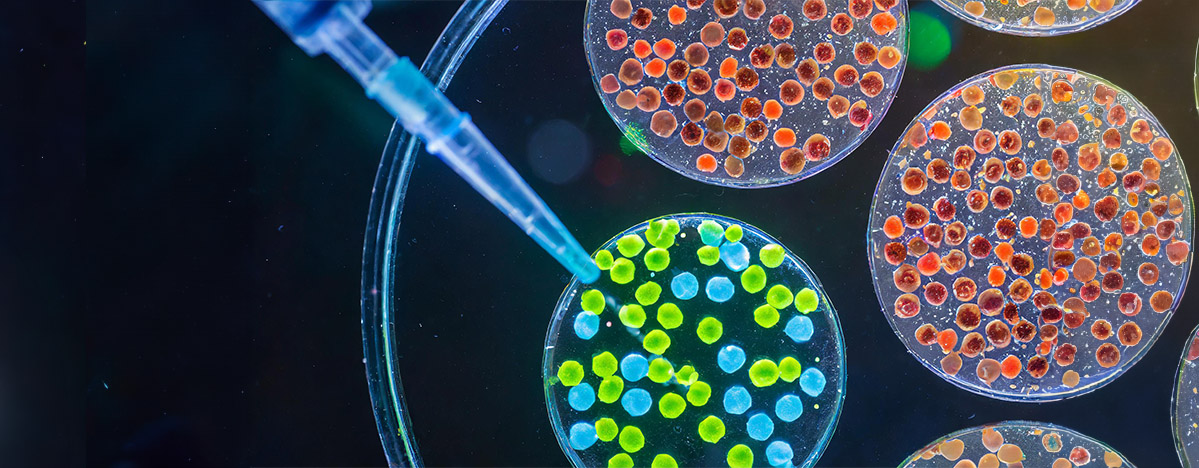BLOG > mRNA & LNP > Discover the advantages of our new h Sox2 mRNA

Summary:
2 - Advantages of our messenger RNA h Sox2
1 - Understanding mRNA h Sox2
What is mRNA h Sox2?
Our h Sox2 mRNA is a ready-to-use, stabilized messenger RNA designed to produce high levels of human Sox2 protein. It's available at a concentration of 1.0 mg/mL in 1 mM Sodium Citrate, pH 6.4, with a length of 1172 nucleotides. Produced through in vitro transcription, it's stabilized with a 5' end cap (Cap1), and includes a poly(A) tail at the 3' end. The mRNA sequences are optimized for enhanced stability and performance.
We offer three variations:
- MRNA61: 379770 g/mol.
- MRNA62: 383880 g/mol, modified with 5-methoxyuridine, 5moU.
- MRNA63: 381825 g/mol, modified with N1-methyl-pseudouridine to reduce innate immune response.

Importance of mRNA h Sox2 in Cellular Research
The SRY-box transcription factor 2 (Sox2) gene is pivotal in regulating embryonic development and determining cell fate. It is essential for early embryogenesis and maintaining embryonic stem cell pluripotency. Sox2 is also known to enhance the reprogramming of somatic cells to a pluripotent state in conjunction with OCT3/4, c-MYC, and KLF4. This capability is vital for creating induced pluripotent stem cells (iPSCs), which have transformative implications in regenerative medicine and cancer research.
2 - Advantages of our messenger RNA h Sox2
Enhanced stability and performance
Our h Sox2 mRNA is designed for optimal stability and performance. The sequences are fine-tuned to ensure long-lasting and efficient expression of the Sox2 protein. The modifications in MRNA62 and MRNA63 further enhance stability and reduce the immune response, making these mRNAs ideal for various research applications.
Superior to plasmid DNA
Unlike plasmid DNA (pDNA), mRNA transfection does not require nuclear uptake, as translation occurs directly in the cytoplasm. This feature is particularly beneficial for transfecting slow or non-dividing cells. Moreover, mRNA transfection is non-integrative, eliminating the risk of genetic insertion and mutations, which is critical for stem cell research, regenerative medicine, and vaccine development.
3 - Usage and Protocols
Recommended transfection reagents
For optimal results, we recommend using RmesFect™ (#RM21000) and RmesFect™ Stem (#RS31000) for transfection. These reagents are specifically designed to enhance the delivery and expression of mRNAs in various cell types, ensuring efficient and reproducible results.
Storage guidelines
To maintain the integrity and efficacy of our h Sox2 mRNA, it should be stored at -80°C. We recommend aliquoting the mRNA solution for better long-term storage and to prevent repeated freeze-thaw cycles, which can degrade the mRNA.
4 - Conclusion
Our new h Sox2 mRNA offers a reliable tool for cellular research, providing stability, performance, and safety. Whether you are involved in developmental biology, stem cell research, or regenerative medicine, our h Sox2 mRNA is a practical solution for your experiments.
If you have any questions, please do not hesitate to contact us at contact@ozbiosciences.com.







